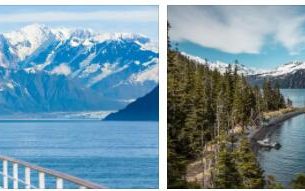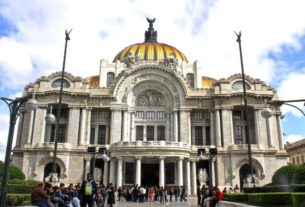Connecticut on the Atlantic Ocean is the southernmost of the New England states . It was the first state with a written constitution and is therefore known as the Constitution State. Connecticut is located in the Ice Age formed low mountain range of the New England Uplands and has many lakes, 63% of the area is forested.
According to a2zcamerablog, Connecticut’s agriculture is of secondary importance, with strong industrialization shaping its economic life. The state is a leader in aircraft engine and submarine construction in the United States. The lakes, mountains, forests and sandy beaches determine the recreational value of the state of Connecticut. In addition to quiet villages, there are also expensive commuter cities. The influx of short-term visitors from New York City is particularly high on the weekends.
Most of the culturally significant places and museums are in Hartford and New Haven. New Haven is also home to Yale, one of the oldest universities in the United States. The largest city is Bridgeport with over 140,000 residents, followed by New Haven with 130,000 residents and the capital Hartford with approx. 125,000 residents.
Climate and Weather
The climate is warm-temperate and maritime. The winters are snowy. However, the weather is quite different within the regions of the state. Temperatures rarely reach extremes, so the summers are not hot, but can be humid and the winters are not bitterly cold. The weather is considered to be very changeable; This is typified by the saying of Mark Twain, who lived in Hartford: “ If you don’t like the weather in Connecticut, just wait the next few minutes. ”
NEW ENGLAND – ORIGIN OF ENGLISH SETTLEMENT
The collective name New England refers to the six northeastern states between New York and the Canadian border: Connecticut , Maine , Massachusetts , New Hampshire , Rhode Island and Vermont . Boston is basically seen as the capital of the region.
New England
Connecticut | Maine | Massachusetts | New Hampshire | Rhode Island | Vermont
New England is the cultural and historical cradle of the USA, nowhere else is the confederation older and therefore more “historical” than here. Of course, this has to do with the fact that colonization by the then colonial power of England began from the east coast. This has left clearly visible traces to this day, be it in the architecture, be it in the language of the residents or in the “European” lifestyle of this region as a whole. Incidentally, New England is also home to the renowned Harvard and Yale universities, to which the elite students in the USA are still sent to this day. There is also, but of course not only, studying there. Or where else do all the young people come from who give the city of Boston its fresh and lively character?
Boston is a city for pedestrians
Boston is widely regarded as the gateway to New England. Once this gate has been pushed open, the city can be easily explored – basically everything can be done on foot. The “Freedom Trail” takes care of that. This inner-city hiking trail connects 16 sights over a length of around four kilometers. These include the “Paul Revere’s House” from 1680, the oldest private building in downtown, as well as the Old State House, which was built in 1713. This is where the spark of the revolution against the colonial power of England originated. The “Rose Kennedy Greenway”, a magical park landscape that the Freedom Trail crosses, provides a bit of nature in between.
The residents of the New England states are commonly called “Yankees”. Settlement in the three northern states of Vermont, New Hampshire and Maine is quite thin, while Rhode Island is one of the most densely populated states in the United States. The landscape and the residents partly meet the expected tourist clichés. The places are rural, the side streets lead over covered bridges and seemingly endless forests. These forests are the special attraction in autumn when they glow in shades of yellow and red at the time of Indian summer.
Coasts studded with lighthouses
Granted, that sounds a bit dry. But anyone who has experienced this blaze of color in Indian Summer in New England will never forget it. In fact, it is so impressive that many tourists visit the New England states for that reason alone. Which, to be honest, is a shame again. Because spring and especially summer also has a lot to offer in the northeastern United States. The New England coastline with its many lighthouses and water sports is definitely worth a trip.
The roads through the country offer hardly any noteworthy views. It is different, as I said, on the partly rocky, partly sandy coasts, which are peppered with lighthouses. Here you can get the lobster (lobster) and the creamy mussel soup (clam chowder), which are cheap for European prices.
While Connecticut, Rhode Island and Massachusetts are more affluent and accordingly interspersed with larger urban centers, the sparsely populated northern states of Vermont, New Hampshire and Maine remain dominated by agriculture. Here you can spend a vacation in the USA off the beaten track and get to know the people and mentality of the New England states in peace.
Climate and travel time
The best time to travel to New England is from mid-May to mid-October. The seasons are clearly defined. Winter is very cold with lots of snow, but there are also numerous days with clear skies. Spring has cold nights and fresh days. The summers are pleasantly warm, at times very hot and very humid. Autumn has sunny, fresh days and is considered the most beautiful time of the year (Indian Summer) because of the pronounced color of the leaves. Vermont and New Hampshire also have a so-called fifth season: the “Mud Season” (mud season) in April, after the snow and before the flowers bloom.



